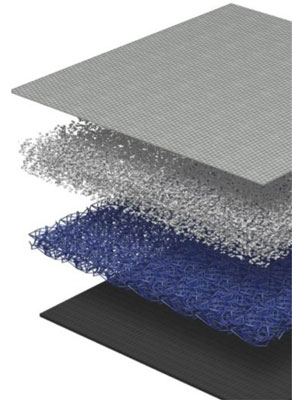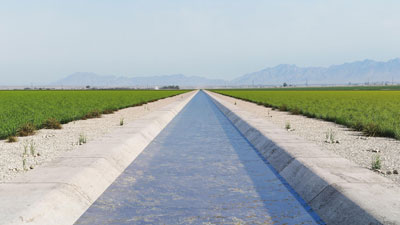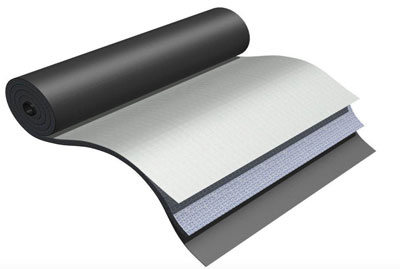A patent just issued to Santa Monica, Calif.-based Cortex Composites Inc. embodies key aspects of an emerging alternative to cast-in-place, shotcrete or precast concrete surfaces or structures—Geosynthetic Cementitious Materials Composite Mats (GCCM)—for channel, canal or ditch lining, erosion control and slope protection. Weighed against conventional concrete in heavy/civil, mining or oil & gas work, GCCM afford time, labor and material savings realized from the expedited placement and in-situ hydration of rolled products bearing layered reinforcements and portland cement-based mortar dry mix.



Cortex Composites underscores the strength of claims in its GCCM concept (U.S. Patent 10870964), primarily around four components: water impermeable and permeable layers; cementitious mixture between the layers; and, a structural material to connect the layers. Its market-ready mat is packaged in rolls, with top to base layers of polyvinyl acetate water-soluble fabric; fused loop polypropylene filaments; and, waterproof polypropylene membrane. Upon application of water to an unrolled, edge-anchored mat along a channel, slope or other field condition, the top layer dissolves and enables the cementitious mixture to bind the polypropylene filaments into a 1/2-in. thick composite equal to heavy loads. The concept abides ASTM D8173 – 18, Standard Guide for Site Preparation, Layout, Installation, and Hydration of Geosynthetic Cementitious Composite Mats.
Venture capital-backed Cortex Composites has been developing a broad intellectual property portfolio on many different types of GCCM materials and concepts, including mats using nonwovens, staples, pins, geogrids, thermoformable resin, needle-punching, male-female connection pins, blocks with water conduits, connection wires, sewing, and adhesive injected elements. Company officials believe that the patent, issued in December 2020 with a 2036 expiration, gives considerable protections over a wide range of GCCM materials. — www.cortexcomposites.com